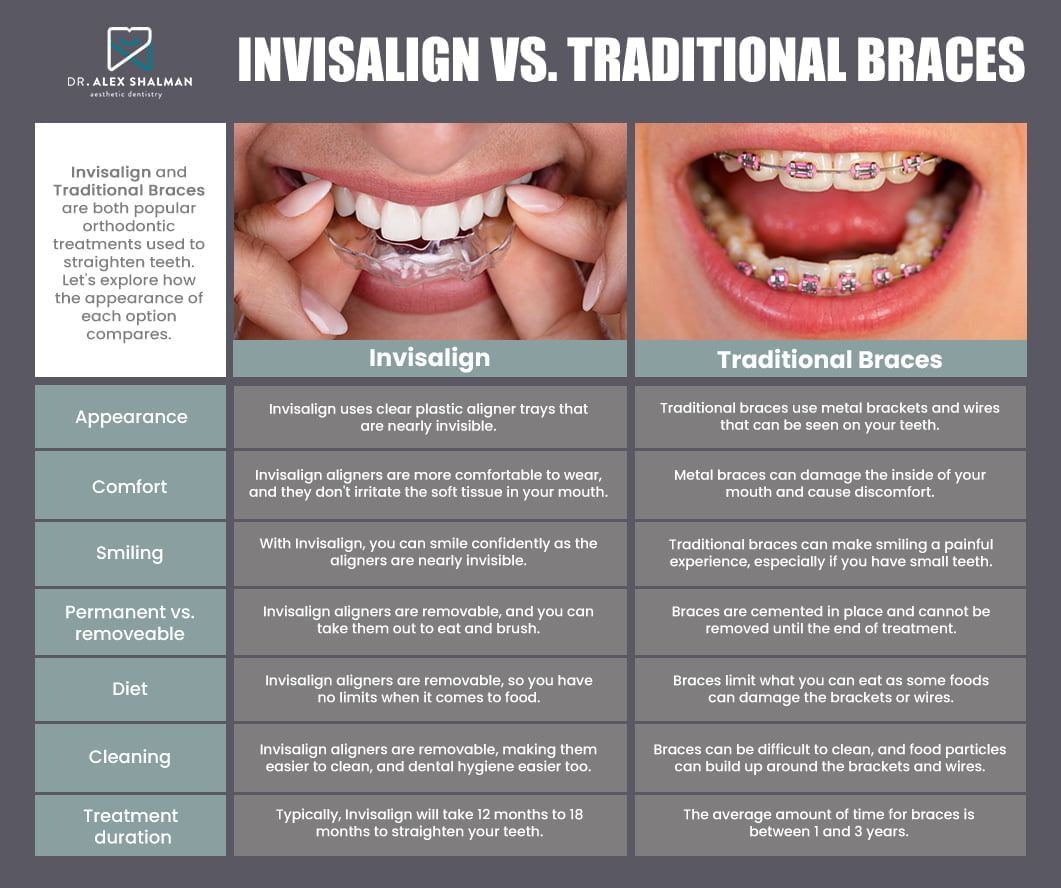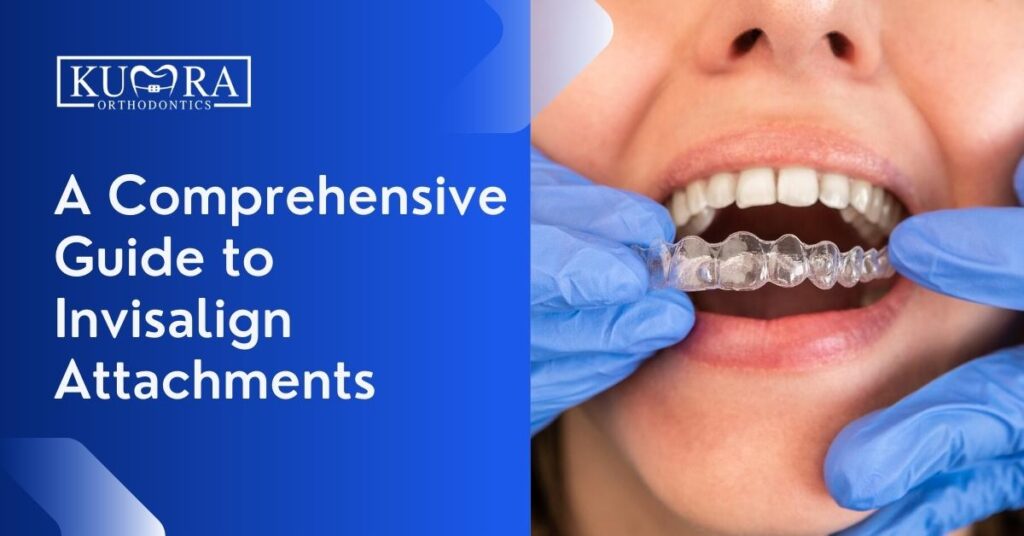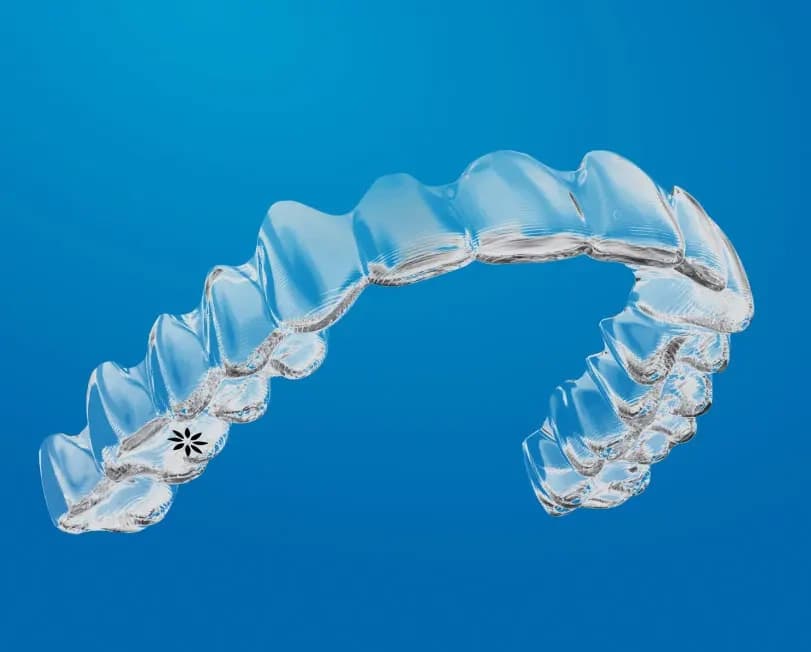Invisalign vs. Conventional Braces: Which Option Is Right for You?
When taking into consideration orthodontic therapy, the selection in between Invisalign and typical braces provides a number of vital aspects that merit cautious analysis. Invisalign uses a discreet alternative with detachable aligners, while typical dental braces give an extra visible yet effective remedy for extreme misalignment.
Summary of Treatment Options

On the other hand, typical braces are composed of metal brackets and wires that are adhered to the teeth. This method uses continual pressure gradually to attain positioning. While effective for complicated orthodontic concerns, conventional dental braces call for regular gos to for adjustments and can posture challenges in maintaining oral health as a result of the difficulty of cleaning around brackets and wires.
Both alternatives have their qualities, and the choice typically hinges on certain oral conditions, lifestyle choices, and client compliance. Inevitably, consulting an orthodontic specialist is critical for figuring out one of the most ideal treatment strategy customized to specific needs. Understanding the nuances of each option can considerably affect the general success of orthodontic treatment.
Visual Factors To Consider
A substantial aspect influencing the selection between Invisalign and conventional braces is the visual charm each treatment uses. Invisalign aligners are crafted from clear plastic, making them essentially unseen when put on.
On the other hand, conventional dental braces contain metal brackets and cables, which can be a lot more visible. While developments in orthodontic modern technology have actually led to the growth of smaller braces and tinted elastics, conventional braces still maintain an even more conspicuous profile. For some individuals, the visibility of dental braces might hinder them from seeking needed treatment.
Inevitably, the choice in between Invisalign and conventional dental braces may depend upon personal choices concerning aesthetic appeals. Patients who focus on discernment usually lean towards Invisalign, while those that are less concerned regarding visibility may go with conventional dental braces. Understanding the aesthetic ramifications of each alternative is vital for making an educated choice that lines up with one's way of life and preferences.
Comfort and Convenience

In regards to convenience, Invisalign aligners are detachable, making it possible for patients to enjoy their favored foods without restriction and keep optimal oral health. Cleaning and flossing are simplified, as the aligners can be gotten during these routines, whereas typical dental braces call for mindful steering around brackets and cables.
In contrast, conventional braces necessitate regular modifications, making them less hassle-free for those with hectic routines. In general, the convenience and comfort of Invisalign make it an attractive selection for several individuals seeking orthodontic treatment.
Treatment Period and Effectiveness
While both Invisalign and standard dental braces are effective in dealing with oral imbalances, the duration of therapy can differ significantly between the 2 alternatives. Generally, Invisalign therapy can take anywhere from 12 to 18 months, depending on the intricacy of the situation. The clear navigate here aligners function by progressively changing teeth into their wanted placements, and regular follow-ups with an orthodontist assistance make certain progress remains on the right track.
On the sites other hand, typical braces typically need a longer commitment, generally varying from 18 months to 3 years. This is due to their fixed nature and the use of brackets and cords, which can be more effective for complex instances and severe misalignments (Invisalign). The therapy performance of traditional dental braces is well-documented, as they enable specific adjustments and better control over tooth activity
Eventually, the choice between Invisalign and standard dental braces may rest on both the anticipated therapy period and the details dental concerns available. Consulting with an orthodontist is important, as they can supply customized referrals based upon individual needs, guaranteeing the picked approach aligns with wanted end results and timeframes.
Price Comparison and Insurance Policy Alternatives
Price plays a substantial function in the decision-making process for people considering orthodontic therapy, whether choosing Invisalign or conventional dental braces. Typically, the expense of Invisalign ranges from $3,000 to $8,000, while typical braces generally set you back between $2,000 and $6,000. Factors influencing these costs consist of the complexity of the instance, the duration of therapy, and geographical location.
Insurance policy protection can dramatically impact out-of-pocket expenses. Numerous dental insurance policy plans provide partial insurance coverage for orthodontic treatments, yet the specifics can vary extensively. It is important for patients to examine their insurance plans to establish the extent of insurance coverage for either option. Normally, traditional dental braces might be a lot more frequently covered by insurance policy plans contrasted to Invisalign, which some insurance providers categorize as a cosmetic treatment.
Furthermore, numerous orthodontic techniques offer versatile settlement strategies, making both treatment choices extra accessible. Clients need to ask about prospective funding alternatives and discounts for upfront repayments. Examining the complete price, consisting of insurance benefits and layaway plan, is vital for making a notified choice that lines up with both visual preferences and budget plan considerations.

Final Thought
In summary, the option in between Invisalign and standard dental braces rests on numerous elements, consisting of visual preferences, comfort, treatment duration, and cost. Invisalign provides a discreet, removable option that helps with oral hygiene and nutritional adaptability, while typical braces may be much more suitable for complex oral concerns and commonly published here come with a lower price factor. Inevitably, appointment with an orthodontist is vital to examine private situations and determine one of the most proper treatment choice for achieving optimal oral positioning.
When considering orthodontic therapy, the option between Invisalign and traditional dental braces offers a number of essential factors that warrant careful evaluation.Contrasting Invisalign and conventional dental braces exposes unique treatment choices for orthodontic improvement.While both Invisalign and standard dental braces are efficient in remedying oral misalignments, the duration of therapy can vary considerably between the two choices.Cost plays a substantial function in the decision-making procedure for people considering orthodontic treatment, whether opting for Invisalign or standard dental braces.In recap, the choice between Invisalign and typical braces pivots on numerous elements, consisting of aesthetic preferences, convenience, therapy duration, and expense.